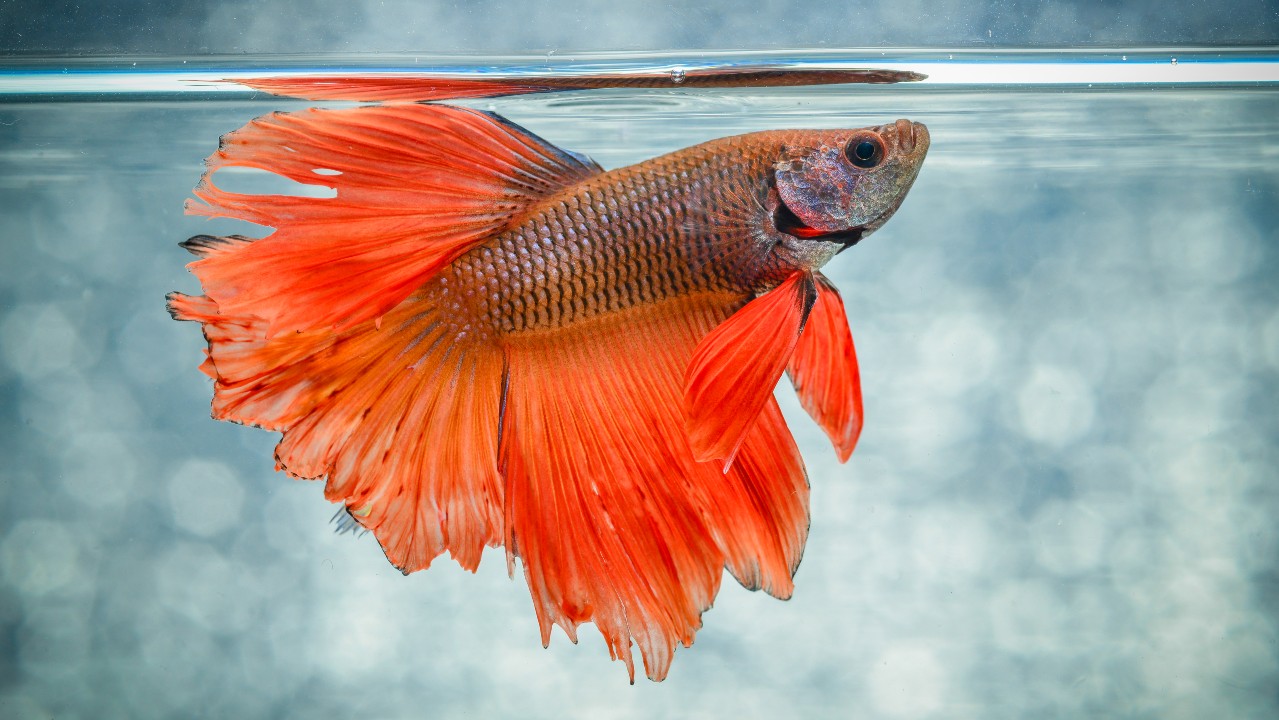How do fish breathe underwater?
How do fish breathe underwater and the differences between gills and lungs.

Like humans, fish need oxygen to survive, so how do fish breathe underwater? Oxygen helps release the energy that powers our bodies from the sugary chemical glucose in a process called respiration. Respiration releases another gas, carbon dioxide, which gorillas, humans, and fish, breathe out. Humans inhale oxygen from the air, through their mouths, down into their lungs to breathe easily. However, fish have it much harder.
To breathe, fish have to pull out molecules of oxygen dissolved in water using their gills, according to the Iowa Department of Natural Resources. The amount of oxygen in the air is a lot higher than the amount of oxygen in the water, though. That means that fish have a much more difficult time breathing than humans do. Fish take water into their mouths just like we take in air, opening and closing their lips.
This water then filters through the gills, organs that have lots of feathery filaments made of protein molecules. The filaments look like tiny bristles on a brush. They have thousands of tiny blood vessels to help oxygen get into the bloodstream, even more blood vessels than in human lungs. The larger number of blood vessels in fish gives a much larger surface for oxygen to pass across. That helps them pull the dissolved oxygen from the water, and release carbon dioxide back into the water.
How gills work
The difference in design between lungs and gills is the main reason why people can’t breathe underwater. Gills are much better than pulling oxygen from water than lungs. Around 75% of oxygen that passes through a fish's gills is extracted, according to the American Museum of Natural History.
Fish also use less energy to live than mammals like humans, so need less oxygen. They do need at least some oxygen though. That means that water with low oxygen levels is just as deadly for fish as low oxygen in the air can be for us. Anoxic and hypoxic zones, sometimes called dead zones, are bits of the ocean where oxygen is so scarce that fish cannot survive, according to NOAA.
If breathing underwater is such hard work, why don’t fish just breathe air like we do? Gills need water to maintain their structure and prevent their thin tissues from collapsing. Just like humans drown underwater, fish can drown in air. If their gills are exposed for open air for too long, they can collapse, causing the fish to suffocate. They are especially suited for life underwater, just as we are for life on land!

Labyrinths: The fish that can breathe air
Labyrinth fish are named after their lung-like labyrinth organs, which have many maze-like compartments, known as lamellae. Those labyrinth organs help fish species, including Betta, Gourami and Paradise fish, to breathe air, just like humans do. They also have gills, so they can breathe oxygen dissolved in the water too, according to Encyclopaedia Britannica.
Get the world’s most fascinating discoveries delivered straight to your inbox.
For millions of years, these fish and their ancestors have lived in very low oxygen waters. Evolution has favored any fish that are born with advantages that help them make the most of the oxygen they can find. Today, if the water labyrinth fishes live in runs out of oxygen, they can dash up to the surface and use their labyrinth organs for a gulp of air.
They can even survive for hours outside of the water! Many labyrinth fish also build bubble nests. Males can blow bubbles to create elaborate nests of air at the surface of the water.

Additional resources
For more information about fish biology, and diversity, check out "The Diversity of Fishes: Biology, Evolution, and Ecology, 2nd Edition" by Gene Helfman and "What a Fish Knows: The Inner Lives of Our Underwater Cousins" by Jonathan Balcombe.
Bibliography
- Iowa Department of natural Resources, “How do fish breathe?”, May 2017.
- Erin Spencer, “How Do Gills Work?”, Ocean Conservancy, January 2020.
- American Museum of Natural hIstory, “Life in Water: Vertebrates - Breathing”, accessed March 2022.
- Canal & River Trust, “Why do fish need oxygen?” December 2020.
- BBC, “Animal organisation - gaseous exchange systems”, accessed March 2022.
- Encyclopaedia Britannica, “Pirarucu”, May 2020.
- Encyclopaedia Britannica, “Labyrinth Fish”, June 2010.
- Clarice Brough, “Labyrinth Fish”, Animal World, accessed March 2022.
- NOAA, “What is a dead zone?”, October 2021.
- Scott DutfieldContributor


